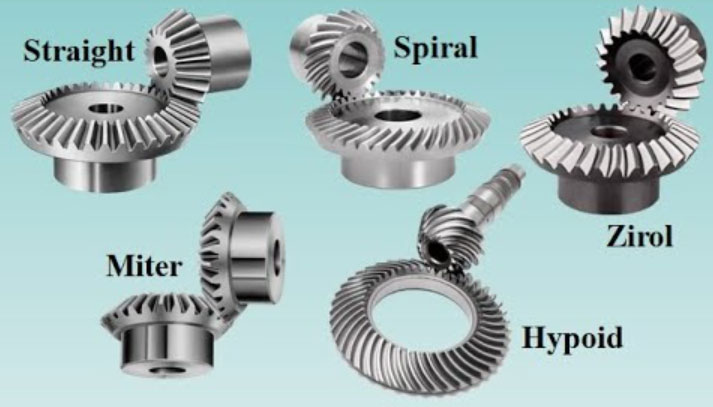In the world of mechanics, power transmission is a fundamental process, and bevel gears play a critical role in this area. These specially designed gears allow the transfer of mechanical power between two intersecting or crossing shafts, usually at right angles. They form a critical part of many types of machinery and vehicles, enabling the smooth, reliable transmission of power in various applications. This article will explore the role of bevel gears in power transmission.

Design and Function of Bevel Gears
Bevel gears are distinct from other gears due to their unique conical design. The teeth of these gears are tapered and can be straight, spiral, or hypoid, depending on the specific type of bevel gear.
Straight bevel gears have teeth that are straight and taper towards the apex of the cone. Spiral bevel gears have teeth that are curved and oblique, allowing for smoother and quieter operation. Hypoid bevel gears, on the other hand, allow for the input and output shafts to be offset from each other, a feature common in many automotive differentials.
Transmission of Power at Different Angles
One of the primary roles of bevel gears in power transmission is the ability to change the direction of power by different angles, typically 90 degrees but not limited to it. The ability to transfer power smoothly and efficiently between two shafts at an angle allows for great flexibility in the design of mechanical systems.
Speed and Torque Alteration
Just like other gears, bevel gears can also be used to increase or decrease speed or torque. By adjusting the size and number of teeth on the bevel gears, engineers can control the speed and torque relationship between the input and output shafts. This ability is particularly useful in many applications, such as in vehicles, where the power from the engine needs to be transferred to the wheels at a different speed and torque.
Applications of Bevel Gears
Bevel gears find applications in numerous areas due to their versatility. They are extensively used in automotive differentials, allowing power to be evenly distributed to the wheels even as they travel at different speeds, such as when the vehicle is turning.
They are also used in rotary lawn mowers, where the power from the engine needs to be transferred at a right angle to the cutting blades. Other applications include hand drills, marine and aircraft drives, and power plants.
In conclusion, bevel gears play a vital role in power transmission across various industries. Their ability to transfer power at different angles, control speed and torque, and their wide range of applications make them a crucial component in mechanical systems. Advances in technology continue to improve the design and efficiency of bevel gears, enhancing their role in power transmission.
